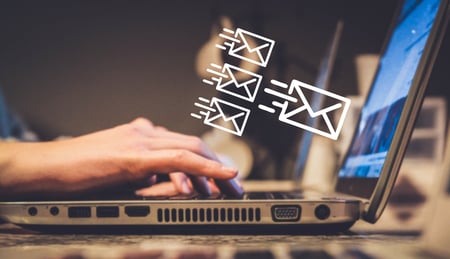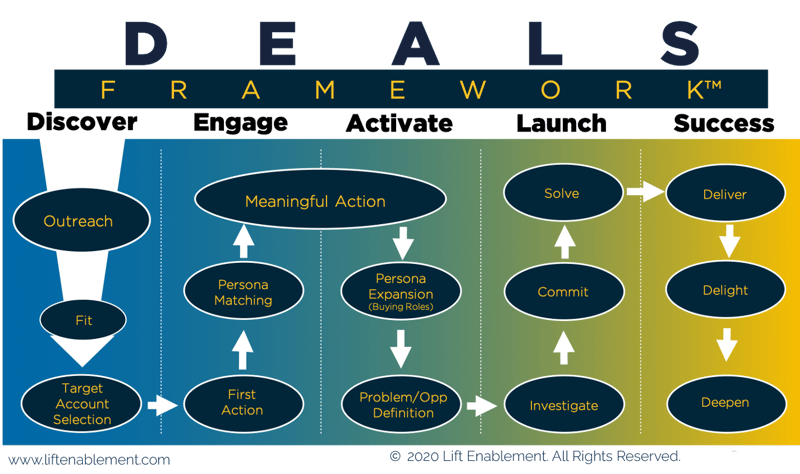 Alert: Someone has downloaded your piece of content.
Alert: Someone has downloaded your piece of content.
We’ve all seen this message before appear in our inboxes, and if you’re like me, you get excited seeing that someone has found interest in your content and has filled out a form. It’s a great feeling when your prospects come to your site and download or engage with your content. But what happens with them after that interaction?
Sure, they’ll get a thank you email with the link to download the piece of content, but what next? Do they sit idle in your database, get a marketing email blast once a month, or something else? If that’s the case, you’re missing out on a great opportunity to continue the conversation, educate, and interact with them. This is where you can take advantage of contextualized email nurtures.
What is a Contextualized Nurture?
A contextualized email nurture isn’t just a generic email nurture with a fancy word pasted in front of it. While both email nurtures and contextualized email nurtures need to have a defined audience and segment, contextualized email nurtures are triggered by a particular action that someone takes.
Think of it this way. In an email nurture, you’re still figuring out things about the audience you’re targeting, or they might not be of high value to do direct pursuit. In a contextual email nurture, you already have information and knowledge about the person/people you’re targeting and can use that knowledge to create emails that would appeal to them based off an action they recently took.
Common Uses for Contextualized Nurtures
Although downloading a piece of content was used as an example of when to create and send a contextualized email nurture, that’s not the only instance where you could create one. Here are other actions that could trigger this type of nurture to be sent.
-
Signing up for a webinar
-
Viewing a specific video on the website
-
Signing up for a newsletter
-
Downloading a brochure, whitepaper, workbook, guide, etc.
-
And more
There are other reasons why a contextualized nurture would be sent out, depending on what your company offers, so don’t feel like you have to stick to this list.
Where This Fits in the DEALS Framework
Let’s revisit The DEALS Framework real quick. The DEALS Framework works as a roadmap to combine all aspects of what your company does to find, win, and retain high-value customers. It unifies the different methodologies, strategies, and tactics that you’re already implementing.

There are three places where contextualized nurtures fit in the framework and can be of best use for you:
1. Engage Stage: During this stage, you want to connect relevant content aligned with the mindset and objectives of your target customers.
2. Activate Stage: Here, you want to continue to educate your target accounts. Deliver commercial point-of-views in a mix of content types. This will help to deepen their connection to the issue and broaden their involvement with your company.
3. Launch Stage: Similar to the Activate Stage, you want to continue to educate your target accounts on point-of-views. The difference here is that the focus should shift towards your solution.
How to Build a Contextualized Nurture for Success
The great thing about contextualized nurtures is that the enrollment is usually automated, so once you set everything up, you can turn it on and not have to worry about it. (Although, you should check in to see how it’s doing and make adjustments when necessary.) Before you can turn the nurture on, there are 5 things you should consider to make your nurture successful.
1. Go in with a game plan. The best and most important thing you can do is have a goal in mind when creating your contextualized email nurture. Ask yourself, what do you want the target persona to do? Download an offer? Come back to the site? Something else? Whatever goal you set should be in alignment with the action they originally take to trigger the nurture.
For example, if someone came to the site and downloaded a piece of content, you would want the goal of your nurture to get them to download similar content or dive deeper into the topic of that downloaded piece. You should be engaging with them and educating them.
2. Make it specific to the stage/position they’re in. There are two ways to look at this: the stage the target account is in through the DEALS Framework, and/or the position they have at their company. When looking at it through the DEALS Framework, go back up to the section titled “Where This Fits in the DEALS Framework” to understand the best use case for the stage they’re in. Some areas of the framework are better for creating contextualized nurtures than others.
Looking at it through the position that the target account is in, you want to make sure that you have a detailed persona with everything you need to know about them before you can gather content for the nurture. You should know what is important to the person, what their pains are, what struggles they face, etc. The more information you have, the better and more specific you can make the emails.
3. Personalize it. Have customized content. This ties in with the second point. You should play to the specific pains and struggles that the person/position has or is going through. If you can make the nurture specific to them and their needs, they will be more likely to open and engage with the content. One thing you can ask yourself is, “Why would this person care to open my email?”
Another thing to keep in mind is to include personalization tokens where possible. You want to make them feel like they are being heard and cared about, so choose where to include those tokens wisely. Too little personalization and it’s a generic email, but too many and it can be overwhelming. To find a balance, write the email out like you would be talking with the person one-on-one and include personalization tokens where it makes sense.
4. Make it engaging! No one likes a boring email. Make the copy interesting and eye-catching. You can do this through storytelling, facts, and more. To increase the chances of engagement, you should also include different types of content rather than including the same type of content in every email. It’s much more interesting when you have one email with a video and another with a quiz rather than every email having a link to a different blog. You want these people to take a specific action, and the best way to do so is to make the emails they receive engaging. Pique their interest. What would get them to take time out of their day to click on a video or a link in an email?
5. Reuse content that fits the bill over making new content (if possible). Once you have a goal in mind and a plan for what you want to accomplish with the nurture, it’s important that your content lines up with that goal. In most cases, people jump to come up with new pieces of content to promote and share rather than digging through content that’s already been created. If you have a piece that’s been performing well and matches up to the nurture’s theme, use it. If you have something older that matches, update it, and use it. Even if you have something that hasn’t performed well and you think it should be, this is an opportunity to throw it into the mix.
Utilizing content that’s already in your system not only saves you time and energy when creating the nurture, but is something you already know will provide value to the person that receives it. If similar people are going to it and enjoying it, there’s a good chance it’ll perform well in the nurture. You don’t always have to create new content. Sometimes it’s more beneficial to use the stuff that’s already working.
The planning process is where you should be spending most of your time when it comes to creating a contextualized email nurture. If you can put in the time and effort to plan out who should be targeted, what action you want them to take, what action will trigger the nurture, and what content should be included, you’ll be far more successful. Then all you have to do is turn the nurture on and watch it do its thing.


